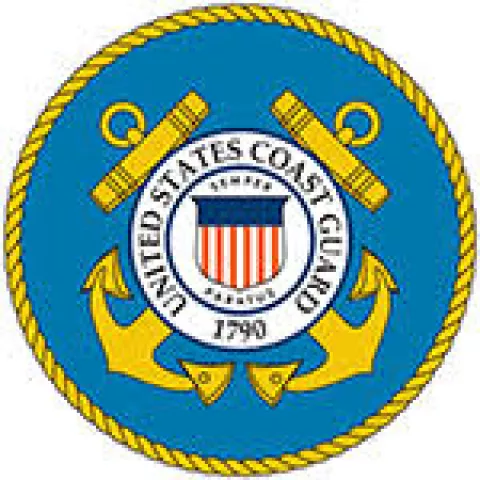
13 May 2015
U. S. Coast Guard Fact Sheet
Taylor Energy Oil Discharge at MC-20AWell Site and Ongoing Response Efforts
The U.S. Coast Guard, as the Federal On Scene Coordinator (FOSC) under a Unified Command (UC) which includes the Bureau of Safety and Environmental Enforcement (BSEE), the Bureau of Ocean Energy Management (BOEM), and the Responsible Party, Taylor Energy, has monitored and responded to discharges from Taylor Energy's Mississippi Canyon 20A (MC-20A) well site resulting from damage to the oil production platform and 25 connected wells during Hurricane Ivan in 2004. The multi-agency effort has worked continuously to prevent and control the discharge, improve the effectiveness of containment around the leaking oil, and mitigate environmental impacts.
Taylor Energy is the Responsible Party required to pay for oil spill recovery and response costs under the Oil Pollution Act of 1990 (OPA). As the Responsible Party, Taylor Energy has a continuing legal obligation to respond to the ongoing oil discharge from the MC-20A well site and must comply with the Coast Guard's Administrative Orders.
The FOSC is responsible for directing and overseeing all response operations associated with the discharge of oil into the Gulf of Mexico from the Taylor Energy MC-20A well site. The Coast Guard, as the FOSC, facilitates UC meetings with Taylor Energy and federal inter-agency representatives, including BSEE and BOEM, to ensure an effective response posture is being maintained at the field level. The UC's collaborative efforts have resulted in the removal of the platform deck, removal of subsea debris, decommissioning of the oil pipeline, and intervention of nine of the 25 impacted wells.
Unified Command Activities and Key Milestones
- Oil that is discharging into the Gulf of Mexico from the well site is rising to the ocean surface and causing a visible oil sheen. From 2004-2008, the Coast Guard's involvement in Taylor Energy was minimal due to no observed sheen in the vicinity of the MC-20A well site. However, in 2008, after the MC-20A site was identified as the source of daily sheen reports, a UC was established with Taylor Energy, USCG, BSEE, & BOEM to direct response efforts for the on-going releases from the Taylor Energy MC-20A well site.
- In 2008, the Coast Guard issued Taylor Energy an Administrative Order that required Taylor Energy to, among other things, conduct daily overflights of the MC-20A well site to visually monitor the oil discharges. Taylor contracts daily overflights of the area, with support from Coast Guard pollution responders and BSEE personnel, to monitor the discharge and report findings regarding the presence and estimated volume of oil on the ocean surface to the National Response Center (NRC). In the even
- In 2009, a subsea containment system (domes placed over projected leaking well sites) was installed on the seafloor at the MC-20A site.
- By 2011, efforts had been taken to plug nine of the wells, with 16 wells remaining to be addressed. In addition, subsea debris, including the platform deck, was removed and the oil pipeline was decommissioned.
- In March 2012, an incident action plan (IAP) was approved by the UC that established standard procedures for monitoring the site and responding to discharges.
- In 2012, due to problems with the original containment system, the FOSC issued an Administrative Order requiring the design, construction, and installation of a new containment dome that will more effectively capture the on-going discharge from the site. Along with the design specs, the AO directs Taylor Energy to submit a written plan including a projected timeline for fabrication and installation. As of May 1, 2015, the final engineering design of the new dome is not complete, and the dome has not been installed.
- In 2013, the last remaining operational containment dome was decommissioned due to damaged components and lack of efficiency/recovery of oil.
- In August 2014, the UC led a joint aerial observation workshop that included the Coast Guard, BSEE, NOAA, and Taylor Energy's representatives and contractors. At that workshop, the aerial observation methodology used to estimate quantity and rate of discharge was reviewed and revised. The Coast Guard and NOAA have placed observers on the Taylor Energy-contracted flights to verify the new approach is being adhered to. The Coast Guard believes that the consistency of sheen size and rate of discharge estimates from reporting parties has improved since this workshop.
- In addition to Taylor Energy's flights, the Coast Guard and NOAA periodically conduct their own overflights to validate sheen reporting methodology and retain independent oversight.
- The reported extent (size, dimensions, character) of the observed oil is a result of very dynamic and highly variable environmental conditions such as sea state, wind speed, and water currents. Calculations of daily oil volume are estimates based on observations of percent cover, sheen color, and dimensions. As such, there is some natural variability in reports.
- Based on data collected from nearly daily overflights since September 2014, oil sheens have been observed and reported by Taylor Energy to be as large as 1.5 miles wide and 14 miles long, with an average of 1 mile wide and 5.5 miles long, covering an average area of 8 square miles. Over this period, the daily volume of oil discharging from the MC-20 well site has fluctuated between a low of less than one barrel (1 barrel = 42 gallons) to a high of 55 barrels of oil (2,329 gallons). The average reported daily oil volume on the sea surface over the past seven months has been in the range of over 2 barrels (84 gallons); the volume on over 75 days was greater than 1 barrel, including 23 days of volume greater than 3.8 barrels (160 gallons) and 4 days greater than 35 barrels (1,470 gallons). These spill size and volume estimates are based on reports submitted by Taylor Energy's contractors to the NRC. All NRC reports can be viewed at www.nrc.uscg.mil.
- The Coast Guard, working with the UC members, is committed to exploring all options to control and contain the oil that is discharging from the well site and to ensure Taylor Energy will work to permanently stop the ongoing oil spill. The Coast Guard remains committed to Responsible Party oversight and coordination to:
- Contain and recover as much discharge product as possible;
- Mitigate environmental impacts; and
- Pursue all available response options.
